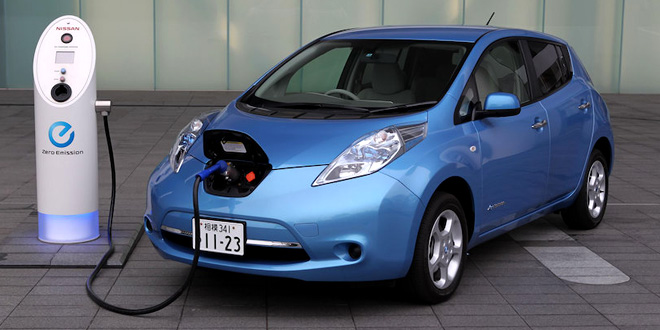Highlights
- Electronic vehicles number around a lakh in India
- Battery manufacturing units and charging stations are lower in number
- A 2013 plan targeted for 70 lakh electric vehicles in India by 2022
It was on a September 2017 afternoon when speaking at an event organised by the Society of Indian Automobile Manufacturers, Union Minister for Transport and Highways, Nitin Gadkari promised to ‘bulldoze’ his way to ensure that Indian vehicles would switch to alternative fuels such as electricity and biomass. Mr Gadkari’s statement came two months before Delhi was covered in a blanket of smog, rocketing air quality standards way above permissible safe limits. Delhi’s poor air quality during the onset of winter is attributed to a variety of factors, from stubble burning in neighbouring Punjab and Haryana to unprecedented vehicular emissions. Steps to control the latter, though possible, have rarely been implemented not just in Delhi, but any Indian city.
Automobile emissions are the second largest sources of contribution of particulate matter (PM) 2.5 and 10 in Delhi during winters. A 2016 study on Delhi’s Air Pollution sources by the Indian Institute of Technology, Kanpur pointed out how diesel emissions from vehicles contributed significantly in polluting Delhi’s air and electric vehicles are a plausible solution to this. Electric vehicles are a global trend today, as many cities in China, Japan, Germany, France etc. are using electric cars to cut down on emissions of pollutants. A report commissioned by the India Smart Grid Forum, an initiative of the Ministry of Power, in 2015 said that in Delhi, the number of vehicles increased to an astounding one crore (two and four wheelers) in 2015, from 30 lakh in 2007.
Understanding the importance of electric vehicles (EVs), the National Electric Mobility Mission Plan was launched by the Centre in 2013, with a target of having 70 lakh EVs on Indian roads by 2022. The plan however did not take off as expected and today the country has merely a total of one lakh electric cars today, against the target of adding eight lakh EVs per year.
The idea of switching to electric cars sounds good, except that it’s not an easy switch to make. Currently, EVs are highly priced compared to diesel and petrol vehicles and it isn’t surprising that people have not taken to buying EVs as the government had expected. Compared to the number of EVs brought in Delhi annually, petrol and diesel cars are nearly triple. Hence, there has been no decrease in vehicular emissions either, said Akshay Ahuja, Senior Analyst, India Smart Grid Forum.
E-vehicles have been implemented as a successful solution in China, where air pollution is a national concern. With more than 3.75 lakh EVs in the country, China ranks only second to the United states (4.10 lakh) in number of operational EVs. But this vehicular turnaround was not achieved in a day. EVs do not require petrol or diesel but still need electrical charge to run and a long-lasting battery to sustain themselves. While China has managed to install over 1,00,000 recharging points and aims to build 7,00,000 more by 2030, India has managed to build only 5. Recently, the ABB Group submitted a bid to the Centre, committing to build 4,500 such stations. Indian Electricity Act of India also allows only public sector companies to distribute power, thus restricting the entry of private organisations in setting up charging stations.
Also Read: Decoding Smog: Why Is It Deadly And A Global Health Hazard
Charging points are not what is holding India’s electric car market from undergoing a much needed expansion. Batteries, the lifeline of EVs are not manufactured in India and carmakers have to import them. This understandably increases the cost of an EV, making a petrol operated vehicle a much affordable choice. Both the China and United States have set up EV battery manufacturing units to avoid import costs.
India does not have a battery manufacturing unit for electronic vehicles and that is a primary requirement for EVs. Without a proper battery manufacturing unit, affordable EVs in India will never be possible, said Mr Ahuja.
Does the future look bleak for EVs in India? Sarath Guttikunda of Urban Emissions, a research think tank working on urban air pollution is not entirely pessimistic about EVs in India.
EV implementation in India must be systematic without unrealistic goals or deadlines. There should be step by step implementation of replacing existing vehicles with EVs, starting with public buses, commercial vehicles and lastly, private cars and two wheelers, said Mr Guttikunda.
Shenzen in China has 14,000 electric buses at present and will overhaul its public transport scenario completely by 2018. Delhi can be a good starting point for replacement of its 4,000 strong fleet of DTC buses, autorickshaws and commercial vehicles like privately operated cabs. Once these are replaced by EVs, private cars and two wheelers can follow suit. It will be also important for India to have a comprehensive electric vehicle infrastructure in place, with battery manufacturing units and charging stations available.
In May 2017, 200 EVs were launched in Nagpur, comprising buses, taxis, e-rickshaws and autos. This shows that large scale launch of EVs for public usage is not impossible with proper planning. A phase by phase replacement of vehicles in India’s cities will take time, but is not an impossible solution to think of as the air in India’s metros becomes only more difficult to breathe, with every passing day.
Also Read: A Tale Of Two Capitals: Delhi And Beijing’s Fight To Curb Air Pollution






























